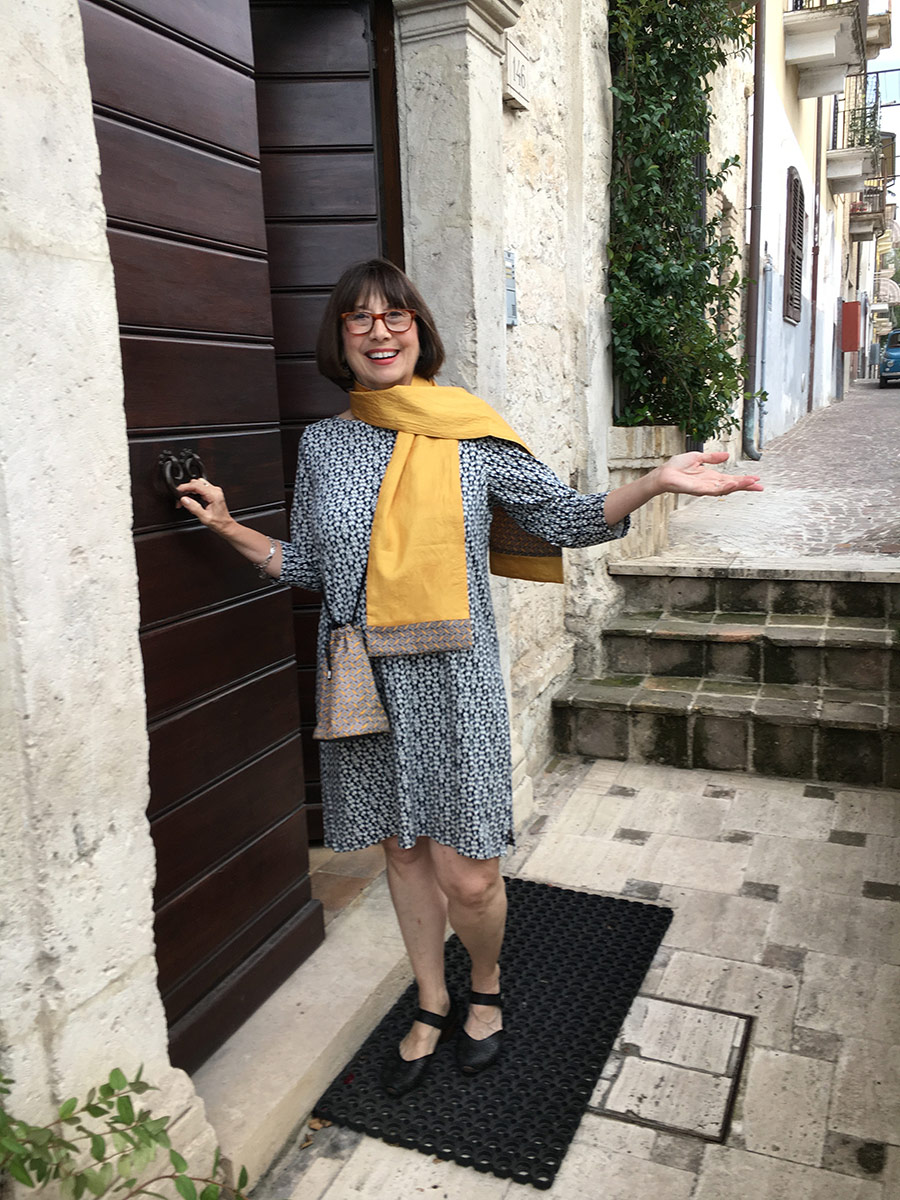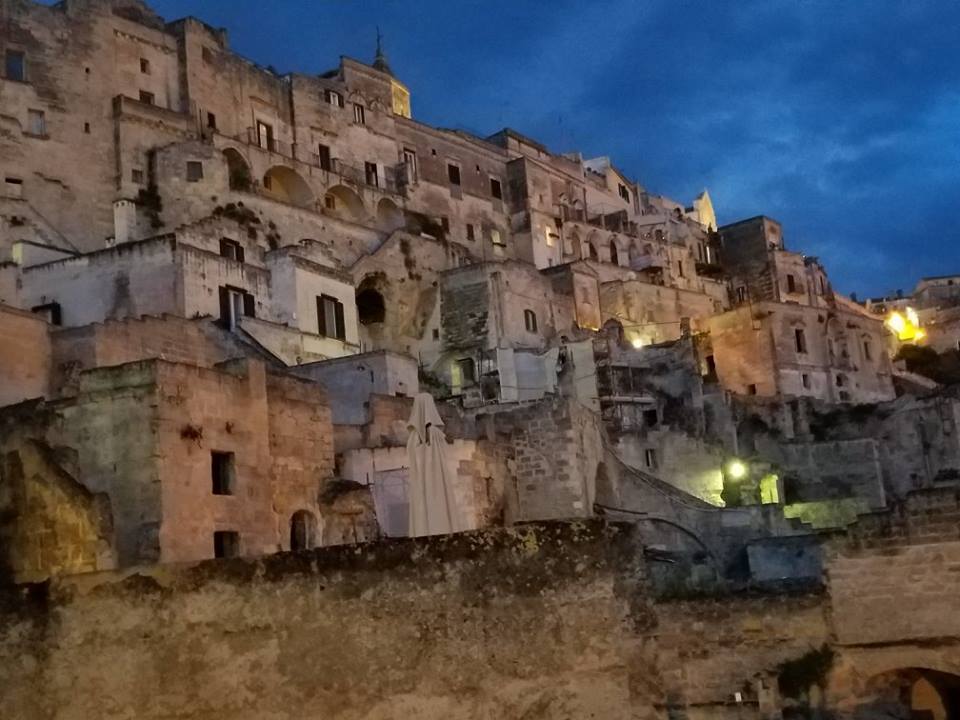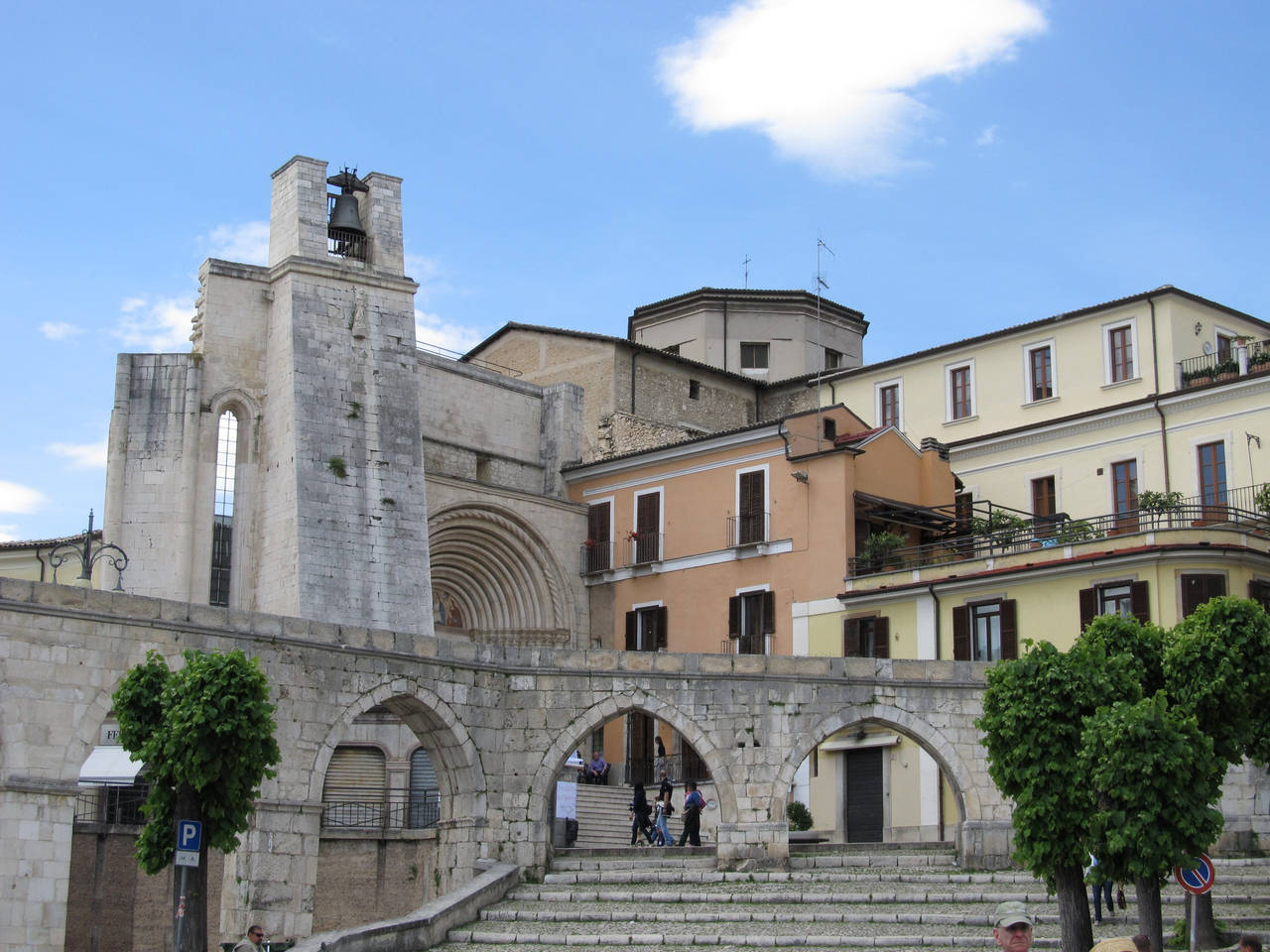I may not have gone where I intended to go, but I think I ended up where I needed to be. — Douglas Adams
I can’t remember how we happened upon Montagnana, exactly. Seven years ago, in 2003, Tim and I were taking a break from our larger group of eight, and he and I and our friend Gus had gone off on our own. Out for a day’s drive in the countryside, we went a little to the north and a little to the east, and followed signs for a place called Arquà Petrarca, only to discover that it was the home of the medieval poet Petrarch (of sonnet fame) in his later years. His desk and mummified cat are still there, and the small house is nestled among lush gardens in the shadow of the Eugenean Hills. It was a nice discovery and a very pleasant way to spend an hour or so. Back in the car, we headed in the general direction of the villa and found, a little to the south and west, the walled city of Montagnana. And it’s kind of a knock-your-socks off place in a very subtle way.
For here in the Veneto, in the Province of Padova, about 9500 people live in a medieval walled city containing a bustling piazza, a splendid Gothic-Renaissance cathedral and the Palazzo (Villa) Pisani, built in 1565 by Italy’s most renown architect, Andrea Palladio. (It is even rumored that Palladio lived here for a time.) On that first visit, the three of us walked through the Padova Gate, one of four gates into the city, which leads right into the villa that Palladio made for its owner, Federico Pisani. Four gateways and 24 towers to defend itself by! It was a quiet time that day, late June and perfect weather. We ate a simple lunch at an outdoor caffe and then walked under the porticoes and looked into the shops.
Like most Italian villages do, this one surprised me: the quality of the shops and the merchandise therein is staggering. What these shops offer — combined with what the weekly markets bring in — create a self-sufficiency that reduces the need to venture into Venice or Bologna or Milan or any of the larger cities more than a few times each year. While most of the shops were closed this time of day, one shop was open, and we looked in with interest. It was a beautiful wine shop called Caffetteria Enoteca and with only a little difficulty, we learned that the proprietor’s name was Gianluca Tomanin. He gave us his card and we asked if he knew of our favorite dessert wine, a Malvasia di Lipari, which I have written about here before. He not only knew it, he knew that the wine produced by Carlo Hauner, the father (recently deceased), was better than that which was being created now by the son. With not too many words in common, we muddled through a conversation and bought a few bottles of wine — a malvasia and two local wines that he recommended. We went away happy, and I knew we’d be back.
It took six years, but we finally returned. Tim and I and our friends Jim and Judy were staying at the same villa we had stayed at years before. We were on our way to Vicenza to see La Rotunda and all the other Palladian villas and thought this would make a perfect first stop — and a lunch break. It was even better the second time.
We happened to come on market day, and the stalls were mostly closing up. Only a few stalwarts remained on the piazza, and Tim and Jim took full advantage. Cheese and salami made for an excellent pre-lunch snack, especially the “Prosciutto Dolce di Montagnana” that the city is famous for. But before we ate a proper lunch, we had to visit the local church. From the outside, Il Duomo di Santa Maria Assunta is a tall but simple brick building that dominates the piazza. Built between 1431 and 15602, it was named for St. Assumption, the patroness of Montagnana, whose day is celebrated each year on August 15. But the building is deceiving.
When construction of the cathedral began in 1431, the Venetian Gothic style was in vogue. It was completed in 1502, in a period dominated by Renaissance architecture, which helps explain the huge difference in style between the outer structure (simple brick) and interior of the building, with its ornate altars, incredible Carrara marble and many fine paintings. Visitors can see the Transfiguration by Veronese and three works by Bonconsiglio, among others. From simple painted walls to wildly ornate (and some gruesome) canvases — including the Battle of Lepanto by DeRossi — the duomo is a fascinating place to while away some time. Judy and I were confused by one high pulpit with a carved human fist extending over the edge. A candleholder? Don’t know. But the baptismal font was impressive and the various altars and the shell motifs over them were breathtaking.
A woman was taking care of the church while we were there — cleaning the altars and the woodwork, arranging flowers, turning off lights as it neared noontime. She told us she was going to lock the front door and go to lunch but that we could stay as long as we liked, as long as we left by the side door and made sure it was locked when we left. The only ones in the church, we had been entrusted with the treasures of heaven. A little stunned, we looked around some more and then did as we were told, exiting the side door, making sure it was locked tight and going in search of lunch.
I remembered the restaurant we had been to years before; I even brought the card with me. Not the fancy Aldo Moro Hotel e Ristorante, no, for us the Caffee Loggia, across the street from the church. Not only was the food terrific (again), we struck up a friendship with the Romanian-born waitress, Lia. She spent a lot of time with us (things had calmed down now, this being September) and even arranged for comp glasses of limoncello. We tried to fix her up with a waiter we had met in Mantova, and I wonder if she ever called him. We do what we can to improve international relations.
I don’t know what it is about this little city. In some ways, it feels something like a time warp, all isolated and walled in and everything. But in other ways it is typical of the sophisticated northern Italian city, just on a smaller scale, and it’s doing fine, thank you very much. I was startled to see — among the trailers for the mercato and the centuries-old buildings — a poster for the local theatre (Cinema Bellini) advertising the latest Harry Potter movie. Civilization is not passing this place by (if you call movies a trace of civilization!) but it’s not getting the better of it, either. With its antiques market the third Sunday of every month, a slew of restaurants to choose from and a rather unique duomo and piazza, I’d say Montagnana is worthy of a visit. Just don’t tell too many people about it — I like it just the way it is!
Buon viaggio!

Linda Dini Jenkins is a card-carrying Italophile, travel planner, freelance writer, and amateur photographer. Travel is her passion, so writing about her travels just comes naturally. She hopes all her travelers find a way to express their joys, surprises, and fears as they travel and gives every traveler a nifty journal to help smooth the way. Learn more…







